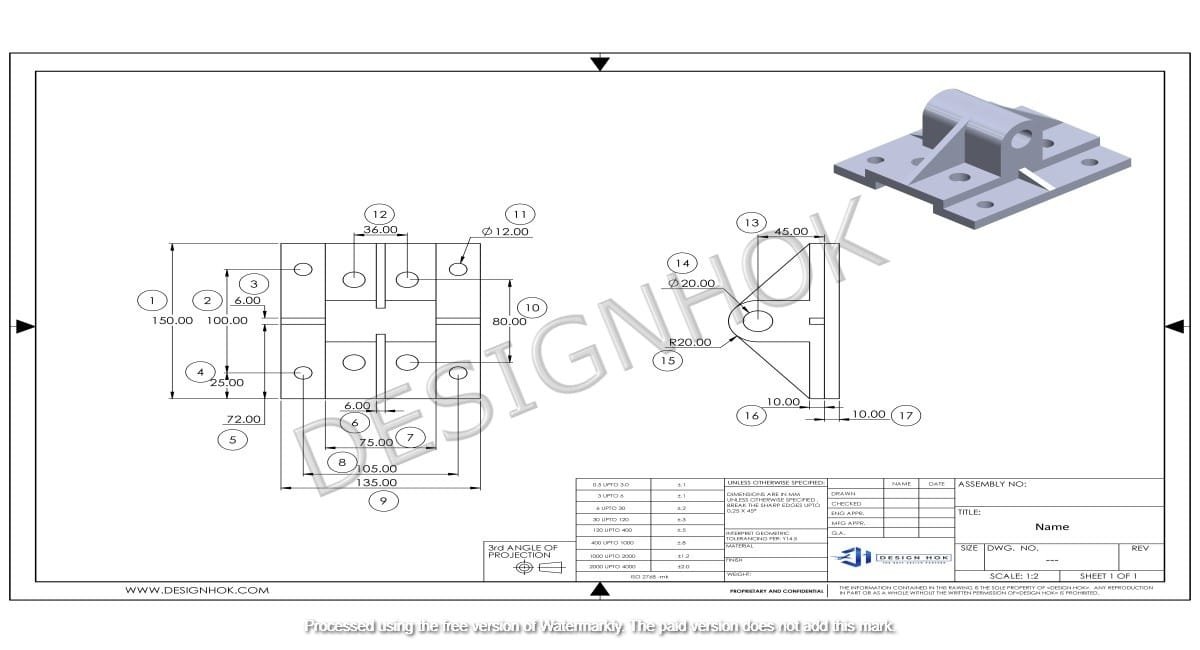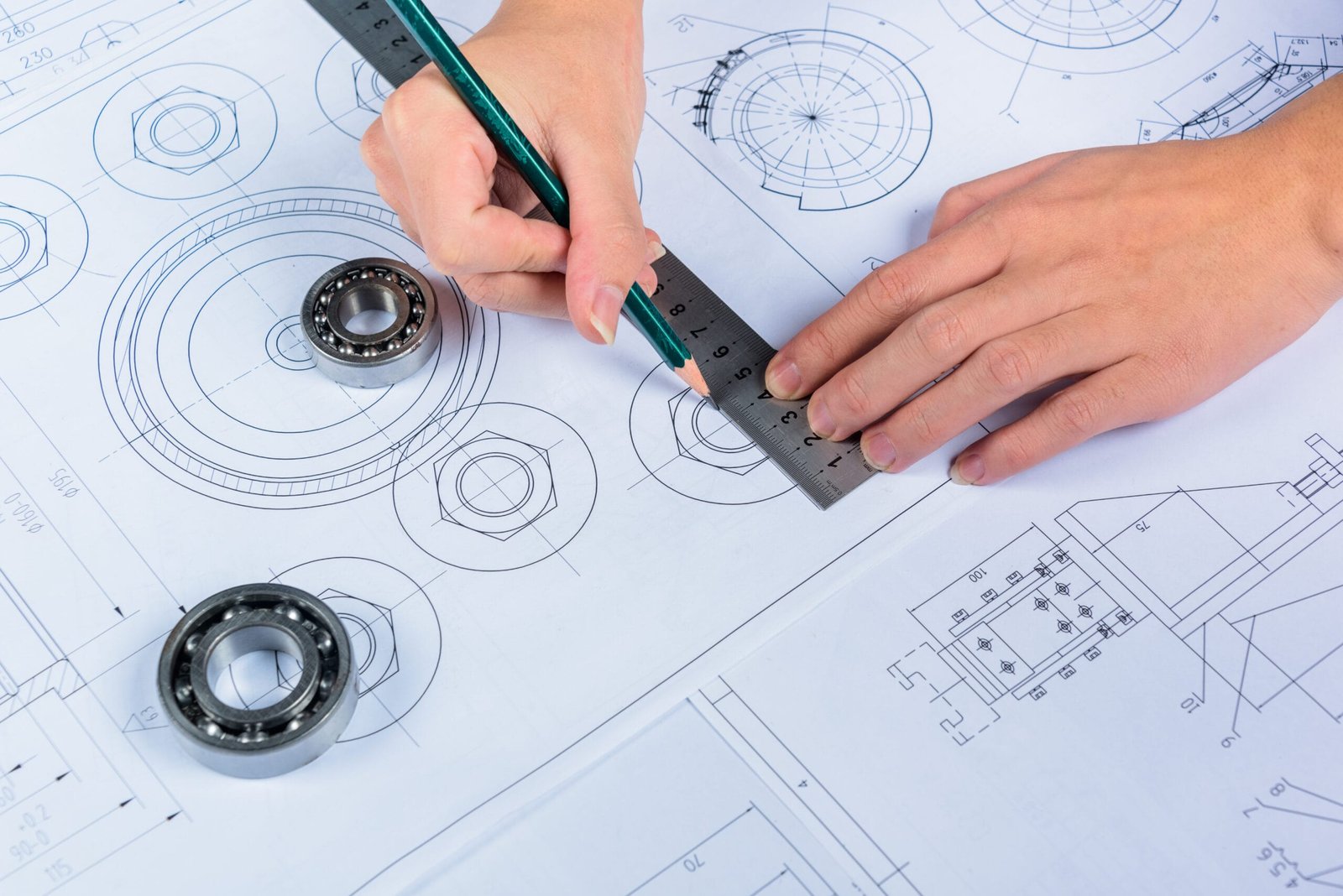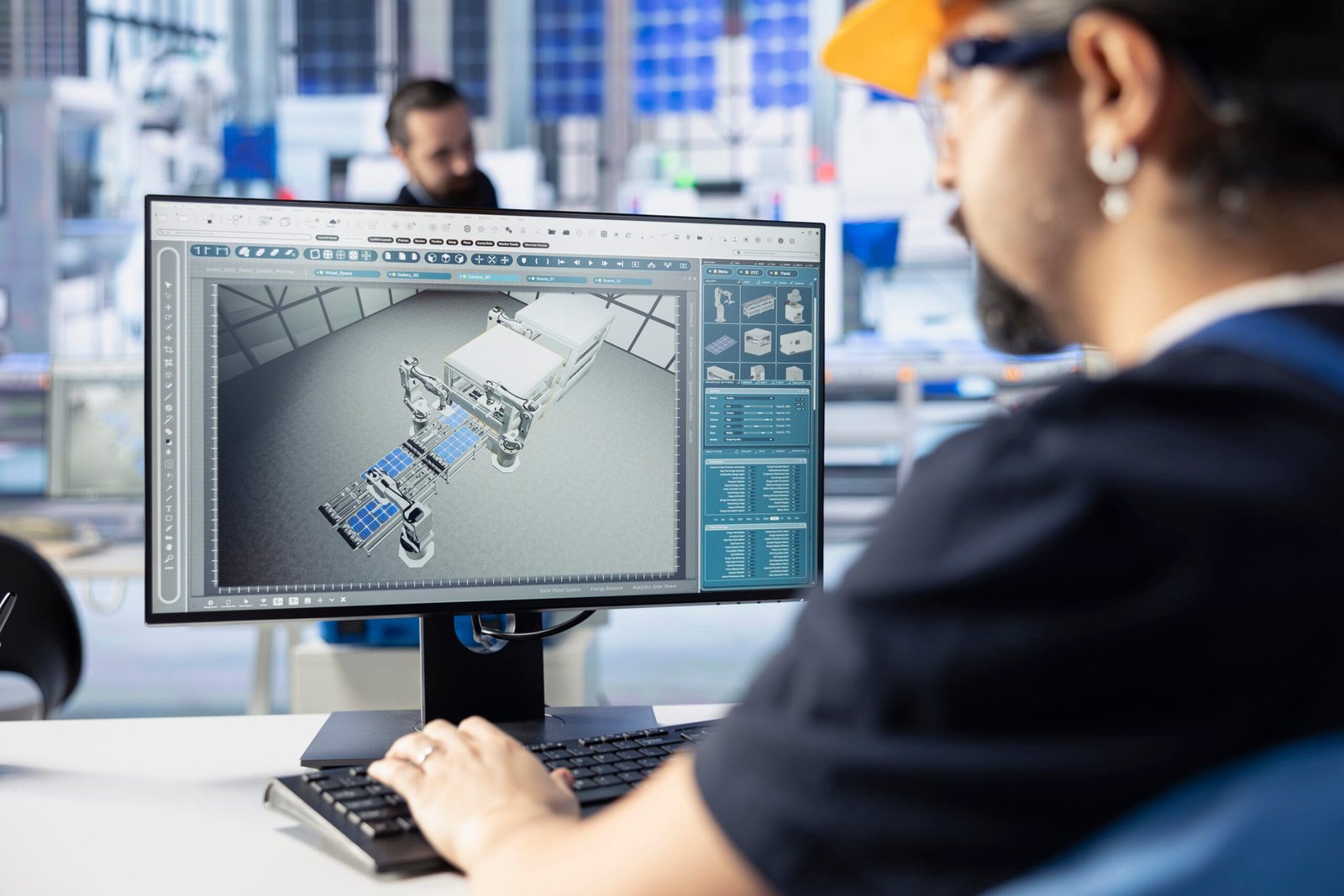Description
Understanding 3D CAD Modeling for DesignHok is a powerful tool used in engineering, architecture, and product design to create detailed and accurate digital representations of physical objects. At DesignHok, 3D CAD modeling plays a crucial role in enhancing design accuracy, reducing errors, and improving visualization. This blog explores the fundamentals of 3D CAD modeling, its applications, benefits, and best practices for creating high-quality designs.
1. What is Understanding 3D CAD Modeling for DesignHok?
Understanding 3D CAD Modeling for DesignHok is the process of creating three-dimensional digital representations of objects using specialized software. These models can be used for design, simulation, analysis, and manufacturing. Unlike 2D drafting, which focuses on flat drawings, 3D CAD models provide depth, allowing designers to view objects from multiple angles and understand how they function in real-world conditions.
Types of Understanding 3D CAD Modeling for DesignHok:
- Solid Modeling: Creates complete, volumetric models that can be analyzed for strength and functionality.
- Surface Modeling: Used for creating complex, curved surfaces in automotive and industrial design.
- Wireframe Modeling: A skeletal representation of an object used for conceptual design.
2. Importance of Understanding 3D CAD Modeling for DesignHok
At DesignHok, Understanding 3D CAD Modeling for DesignHok is essential for various projects, including mechanical design, architecture, and product development. The use of 3D CAD ensures:
- Precision and Accuracy: Eliminates errors associated with manual drafting.
- Enhanced Visualization: Allows clients and designers to see the final product before manufacturing.
- Improved Collaboration: Teams can work on the same model, making real-time changes.
- Cost and Time Efficiency: Reduces rework by identifying design flaws early.

3. Applications of 3D CAD Modeling
1. Mechanical Design
Understanding 3D CAD Modeling for DesignHok is widely used in mechanical engineering for designing machines, tools, and components. It helps in:
- Creating detailed models of mechanical parts.
- Running simulations for stress, thermal, and motion analysis.
- Generating assembly drawings for manufacturing.
2. Architectural Design
In architecture, 3D CAD modeling is used to create building structures, interior designs, and urban planning layouts. It enables:
- 3D visualization of buildings before construction.
- Integration of materials, lighting, and textures for realistic rendering.
- Precise measurements to ensure structural integrity.
3. Product Design and Manufacturing
3D CAD is essential in product design for industries like automotive, electronics, and consumer goods. It aids in:
- Prototyping new products before mass production.
- Ensuring manufacturability by testing different materials.
- Generating detailed 2D drawings for production.
4. 3D Printing and Rapid Prototyping
With the rise of 3D printing, CAD models are used to create printable prototypes, reducing the time and cost of product development.
4. Best Practices for Understanding 3D CAD Modeling for DesignHok
1. Start with a Clear Design Plan
Before creating a model, define the project scope, dimensions, and materials. This helps in structuring the model efficiently.
2. Use Parametric Design
Parametric modeling allows designers to create flexible models where dimensions and features can be modified easily without redrawing the entire model.
3. Maintain Proper Layer and Naming Conventions
Organizing the CAD model with layers and proper naming makes it easier for teams to collaborate and make revisions.
4. Optimize Geometry for Performance
Avoid unnecessary details that increase file size and processing time. Keep models efficient by using simplified representations where possible.
5. Apply Real-World Constraints
Ensure that the model reflects real-world conditions such as material properties, weight distribution, and manufacturing constraints.
6. Check for Errors and Interferences
Use software tools to detect interferences and misalignments in assemblies before proceeding to manufacturing.
7. Use High-Quality Textures and Materials
For realistic rendering, apply accurate materials, textures, and lighting to enhance visualization.
8. Regularly Save and Backup Files
CAD software can crash unexpectedly. Frequent saving and cloud backups prevent data loss.
5. Popular Understanding 3D CAD Modeling for DesignHok
Different industries use various CAD software based on their specific needs. Some of the best 3D CAD software includes:
- AutoCAD – Ideal for architecture and mechanical design.
- SolidWorks – Used for complex mechanical and product design.
- Fusion 360 – Great for 3D modeling and simulation.
- CATIA – Preferred for aerospace and automotive design.
- Revit – Specializes in architectural BIM (Building Information Modeling).
- Blender – Popular for animation and 3D visualization.
Choosing the right software depends on the complexity of the project and the desired output.
6. Benefits of Understanding 3D CAD Modeling for DesignHok
1. Faster Product Development
Understanding 3D CAD Modeling for DesignHok speeds up the design process by allowing rapid prototyping and testing before production.
2. Improved Communication
Visual models make it easier for clients and team members to understand designs and provide feedback.
3. Cost Savings
Identifying design flaws early reduces material wastage and expensive modifications during production.
4. Better Quality Control
3D CAD models ensure consistency in design, reducing the risk of errors in manufacturing.
5. Seamless Integration with Other Technologies
3D CAD models can be integrated with simulation software, CNC machining, and 3D printing for advanced manufacturing processes.
7. Challenges in 3D CAD Modeling and How to Overcome Them
1. Steep Learning Curve
Mastering 3D CAD software requires training. To overcome this, designers should take online courses and practice regularly.
2. High Computing Power Required
Complex models require powerful hardware. Investing in a high-performance workstation can improve efficiency.
3. File Compatibility Issues
Different CAD software may have compatibility issues. Using universal file formats like STEP and IGES can solve this problem.
4. Managing Large Assemblies
Working with large 3D assemblies can slow down the software. Using lightweight modeling techniques and suppressing unnecessary parts can optimize performance.
Conclusion
3D CAD modeling is an essential tool for modern design and manufacturing. It allows for accurate visualization, efficient collaboration, and cost-effective production. At DesignHok, adopting 3D CAD modeling helps in delivering high-quality designs across various industries. By following best practices and using the right software, designers can enhance their workflow and create innovative solutions.
FAQ
1. What is the difference between 2D and 3D CAD modeling?
2D CAD modeling focuses on flat drawings with height and width, while 3D CAD modeling includes depth, allowing for realistic visualization and better design analysis.
2. Which industries use 3D CAD modeling?
3D CAD modeling is used in mechanical engineering, architecture, product design, automotive, aerospace, and manufacturing industries.
3. What software is best for beginners in 3D CAD modeling?
For beginners, Fusion 360 and SketchUp are great choices due to their user-friendly interfaces and powerful features.
4. Can 3D CAD models be used for 3D printing?
Yes, 3D CAD models can be exported in STL format and used for 3D printing. The model should be optimized for printability.
5. How can I improve my 3D CAD modeling skills?
Practice regularly, take online courses, explore tutorials, and experiment with different modeling techniques to improve your skills.





